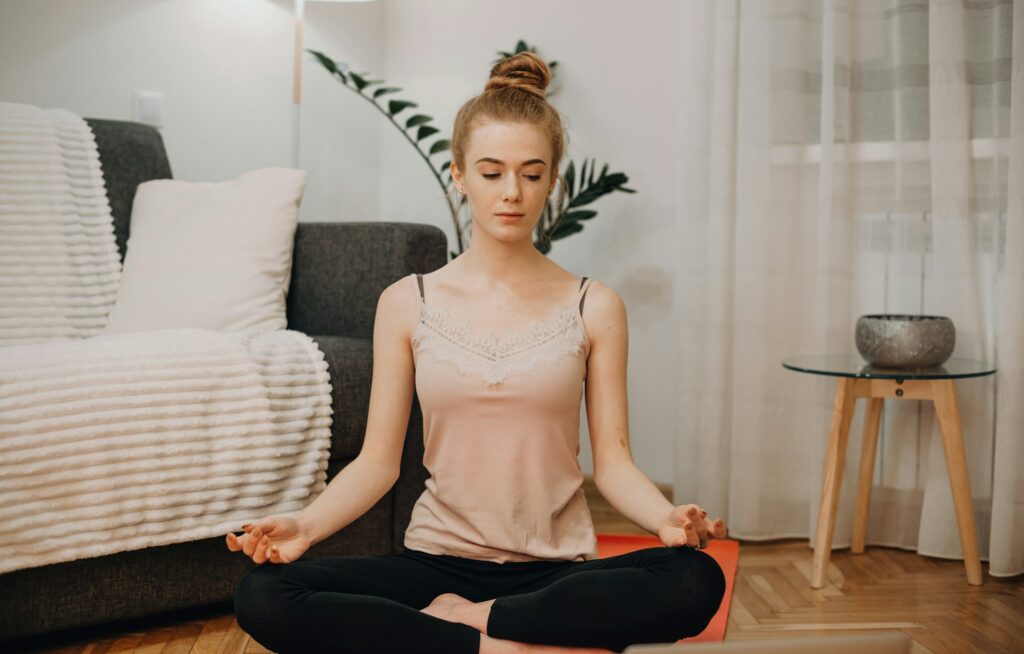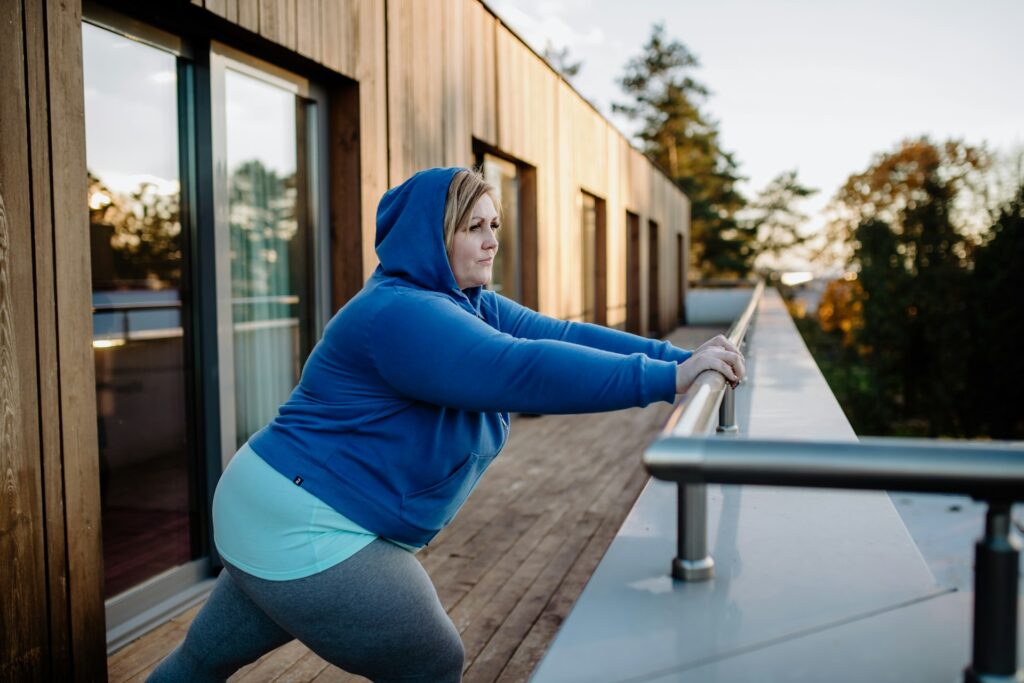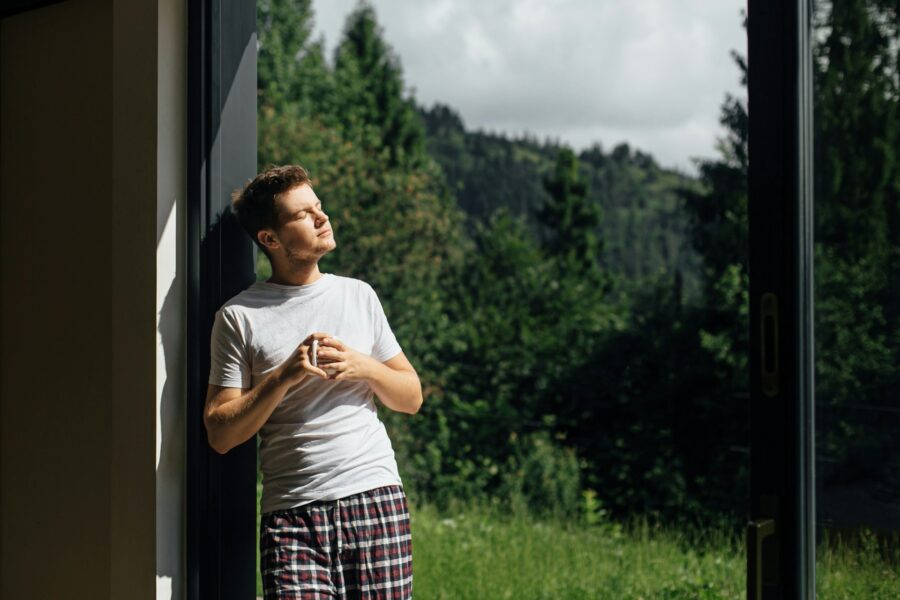“Habit stacking” might sound like another buzzword, but it’s actually one of the simplest, most useful ways to build better routines without overhauling your life.

It’s the idea of taking a habit you already do, such as making coffee or brushing your teeth, and linking a new habit onto it. That way, you don’t have to rely on motivation or willpower. You’re using an existing rhythm in your day to naturally trigger something new. Here’s what that looks like in practice, and why it works so well.
1. You build new habits without relying on motivation.

Motivation is unpredictable. Some days it shows up, most days it doesn’t. Habit stacking removes that gamble by connecting your new habit to something you’re already doing. It takes the guesswork out of when or how you’ll make time for something. Instead, it becomes a natural part of what you’re already doing anyway.
2. It works with how your brain already functions.

Our brains love routines and patterns. When you pair a new habit with an existing one, it creates a mental link that sticks faster. It’s like muscle memory, but for your daily life. Eventually, doing one thing will start to naturally cue the next. That automatic flow makes habits more likely to last.
3. You can start small and still see real change.

One of the best parts of habit stacking is that it doesn’t require a dramatic life shift. You’re not reinventing your whole morning; you’re just adding a little something to a moment that already exists. Tiny changes feel manageable. And when they’re done consistently, they add up in ways that surprise you.
4. It helps reduce decision fatigue.

The more choices you have to make in a day, the more mentally drained you become. By stacking habits, you reduce the number of decisions you need to make. It’s already built into the flow. You don’t wake up wondering when you’ll journal or stretch or drink water—it just happens right after something else you already do.
5. It makes habits feel less like chores and more like routines.

When you attach a new habit to something familiar, it doesn’t feel like an extra task. It just feels like part of the moment. You’re not forcing yourself to carve out extra time or space. Instead, the new habit slides in beside something you’re already doing, which makes it feel easier and more natural.
6. It helps create momentum at the start of your day.

Stacking a few small habits in the morning can set the tone for the rest of your day. Even if they’re simple—like drinking water after brushing your teeth or journaling after your first coffee—they create a rhythm that carries forward. That early momentum builds a sense of capability. You’ve already done something for yourself before the day even begins.
7. It makes consistency easier to maintain.

Consistency is what turns actions into habits, but it’s hard to stay consistent when your routine changes all the time. Habit stacking keeps things grounded by tying new behaviours to existing ones. Even if your day gets chaotic, your stacked habits remain anchored to reliable triggers. That makes them harder to forget and easier to repeat.
8. You can use it to improve almost any part of your life.

Whether you want to drink more water, move your body, read more, or stay on top of your finances, habit stacking can support all of it. You just need to find the right anchor habit to build around. The versatility of it means you can use it wherever you need a boost, without making massive changes to your schedule.
9. It helps reinforce your identity over time.

Every time you follow through on a small habit, you’re reinforcing the kind of person you see yourself as. Habit stacking builds those wins into your day more consistently. As time goes on, you’re not just someone who tries to meditate or wants to stretch—you become someone who actually does. That identity change makes future habits easier to stick.
10. It’s easy to adapt as your life changes.

If your routine changes—new job, different schedule, or a move—you don’t have to start from scratch. You can just rebuild your stacks around your new anchor points. That flexibility is what makes it sustainable. You’re not locked into one “perfect routine”—you’re creating habits that move with you.
11. It reduces the guilt of “falling off track.”

Because the habits are built into your normal routines, you’re less likely to completely forget them. If you do miss a day, it’s easier to get back on track because the trigger is still there. You don’t need to start over; you just pick it up where you left off. That mindset removes pressure and helps habits feel more forgiving.
12. It helps you be intentional without feeling overwhelmed.

Trying to overhaul your life in one go is overwhelming, but habit stacking is a way to be intentional in small, doable increments. You’re not building a new life overnight—you’re adding structure, gently. Those micro-intentions add up. And before you know it, your day reflects more of what you actually value.
13. You start feeling more in control of your time.

When your habits are scattered or inconsistent, it’s easy to feel like the day gets away from you. Habit stacking brings structure without rigidity. You know when and where certain things are happening because they’re linked to what’s already in place. That sense of rhythm makes the day feel less chaotic. You’re not just reacting; you’re shaping your routine with quiet intention.


